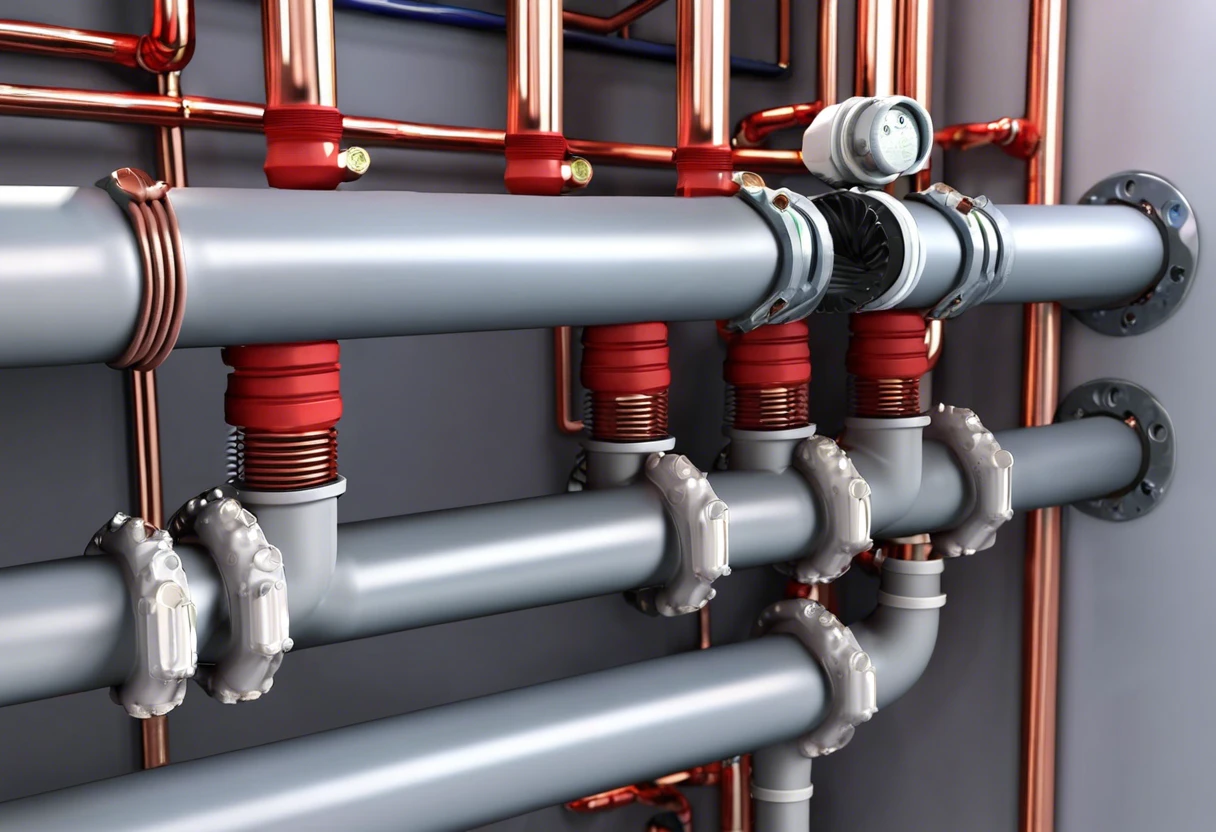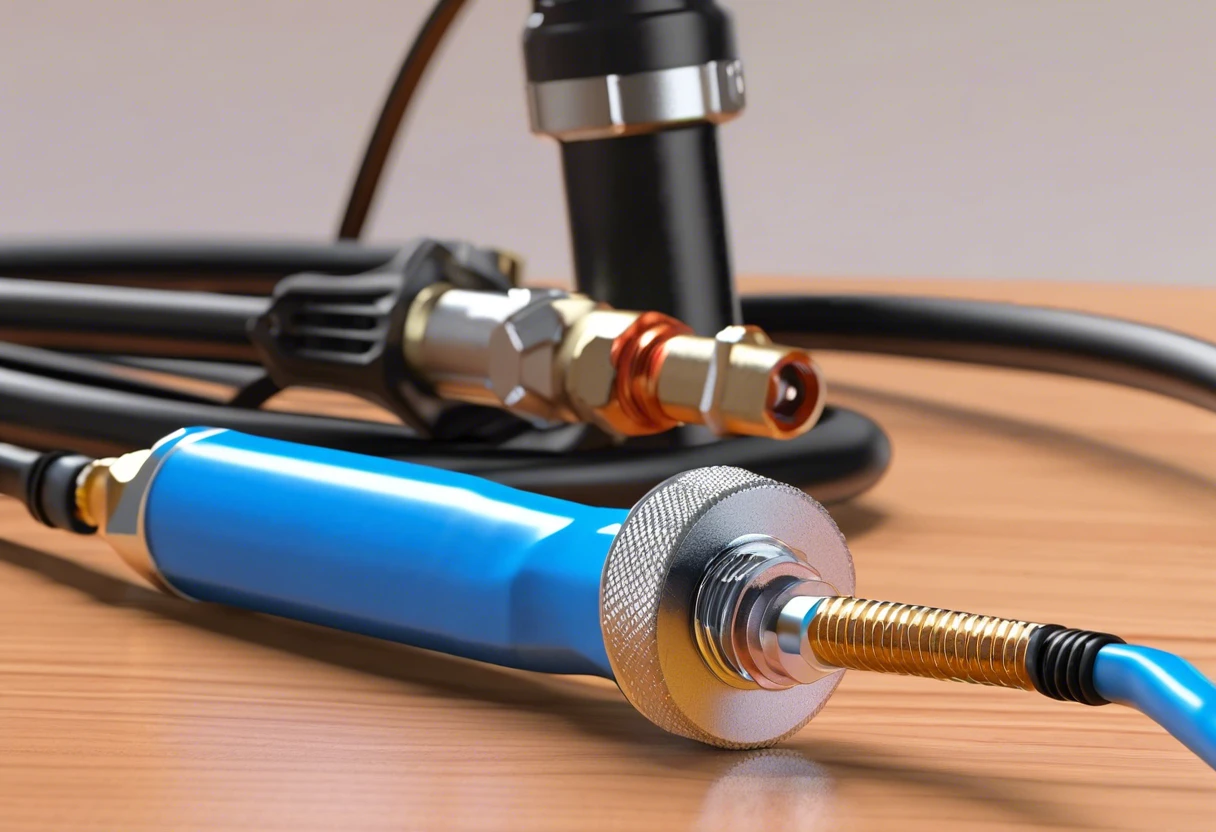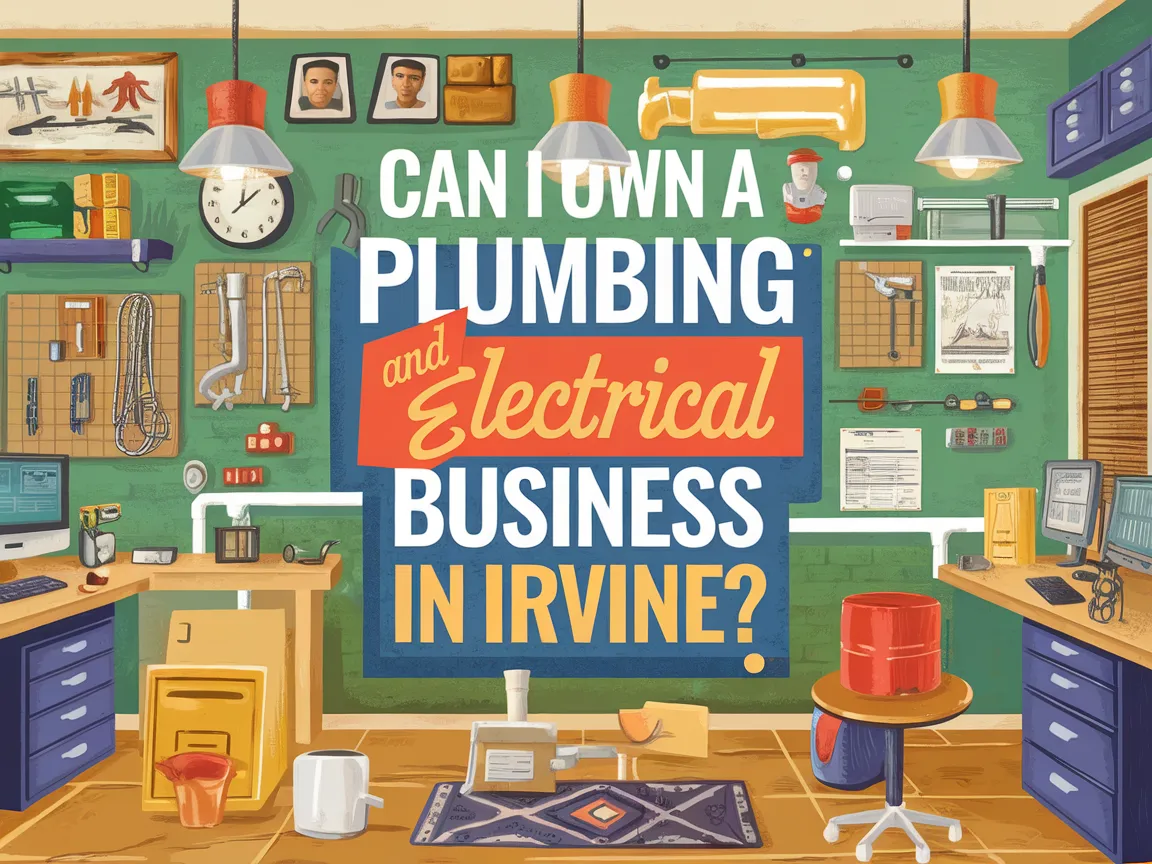Can You Use Electrical Solder for Plumbing?
Last Updated: February 27, 2025
Learn about electrical solder, its applications, essential considerations, and costs.
Electrical solder is a special metal that melts when it gets hot and cools down to stick things together. Imagine putting together two pieces of your favorite toy with magic glue!
When I’m chatting with folks in Irvine, they often wonder if you can use electrical solder for plumbing. I’ve had my own experiences with this, and I’d love to help you navigate those tricky decisions.
This guide will cover what electrical solder is, essential factors before starting, how to use it in plumbing, costs involved, special considerations, and when to call for expert help.
Table of Contents
- Can You Use Electrical Solder for Plumbing?
- What is Electrical Solder?
- Before You Start: Essential Considerations
- How to Use Electrical Solder in Plumbing Applications
- How Much Does It Cost to Use Electrical Solder in Plumbing?
- What Are the Factors Affecting the Use Of Electrical Solder for Plumbing?
- Are There Alternatives to Electrical Solder for Plumbing?
- When to Seek Expert Help for Plumbing Soldering
- Frequently Asked Questions (FAQs)
- Final Words: Summary and Conclusion on Electrical Solder for Plumbing
- Useful References
Can You Use Electrical Solder for Plumbing?
No, you can’t use electrical solder for plumbing. It’s not rated for the high temperatures and moisture in plumbing. Instead, use lead-free solder, designed specifically for plumbing use, ensuring safer and more reliable joints. If you’re interested in diving deeper into professional plumbing techniques, check out professional plumbing career paths.
What is Electrical Solder?
Electrical solder is a fusible (Meltable) alloy used to create a permanent bond between metal surfaces, mainly in electrical wiring. It’s typically made of a mix of tin and lead or lead-free options that consist of tin, copper, and silver. It melts at around 180-190°C (356-374°F). When you apply heat, it flows into the gaps of the joint, ensuring a solid electrical contact. This material is responsible for millions of secure and lasting electrical connections worldwide, with formulations designed for specific applications that promote superior thermal and electrical conductivity.
There was a time I used it for some circuit board jobs where precision mattered because electrical solder ensures finishes compatible with tight spacing. But when someone asked, “Can you use electrical solder for plumbing?” I had to pause and say no. This kind of solder can potentially leach harmful substances, which isn’t super safe for drinking water systems. As an expert, I can tell you that plumbing solder comes with much higher standards for safety and health, emphasizing why plumbing codes now prioritize lead-free flux variants that are safe for drinking water (DU) piping. If you’re wondering about professional drain maintenance, professional drain snaking services can help ensure proper pipe care. Remember, using the right function for the right purpose is key!
Before You Start: Essential Considerations
What do you need to ensure a smooth plumbing project in your home? Let’s break it down.
- Electrical Solder: You’ll need electrical solder, like King Electric 63504, to join copper pipe. It’s crucial for creating reliable, watertight (Water-tight) seals.
- Soldering Flux: Make sure to have flux, such as Oatey 8 oz. No. 95 Myt solder, for clean joints. This product ensures a strong bond between copper surfaces.
- Heat Source: A torch like the Bernzomatic MP-300HX will help you heat the pipes effectively to the required 800°F (427°C).
- Deburring Tool: Use a tool like the Ridgid 42978 to smooth the pipe edges. This makes sure the solder sticks properly, preventing leaks.
- Safety Gear: Don’t forget gloves and safety goggles, like 3M’s protective eyewear, to keep yourself safe while handling hot materials.
You should now have a good understanding of key considerations before starting a project. In the next part, we’ll discuss using electrical solder in plumbing.
Also See: What is a Smoke Test for Plumbing? Quick Overview

How to Use Electrical Solder in Plumbing Applications
Now, let’s dive into the key steps for successfully using electrical solder for plumbing tasks. Follow these closely for the best results.
-
Prepare the Pipes for Soldering
Start by cleaning the joining surfaces of the pipes with sandpaper or a pipe cleaner. This step ensures proper adhesion and prevents leaks later on, which is crucial if you live in areas with fluctuating temperatures like Irvine. If you’re curious about the historical plumbing techniques that influenced modern pipe connections, these methods have evolved significantly over time.
Be sure to remove any old solder too, since contaminants can interfere with your joint. A clean surface is key to a strong bond—you’ll be glad you took the time!
-
Apply Flux to the Joints
Squeeze a small amount of flux onto the pipe joint where you plan to apply the solder. This helps the solder flow and bond to both the metal pipe and fitting, making the connection tight.
Use a liberal yet uniform amount of flux—too little, and it won’t flow well; too much can create a mess and lead to excess solder, which is never a good look.
-
Solder the Joint
Heat the joint evenly with your torch (Around 355°C – 674°F for Flowing Solder), focusing on the fitting rather than the solder itself. Once it reaches the right temperature, introduce the solder into the joint—it should suck into the gap as it melts.
Remember, practice makes perfect! Don’t rush this process; let that molten solder work its magic evenly for a solid bond. Here’s a little nugget of wisdom I’ve picked up: before finishing, ensure the solder has formed a nice fillet around the entire joint.
-
Allow Time for Cooling
Let the joint cool naturally; don’t quench it in cold water. Rapid temperature changes can weaken the bond, especially here in SoCal where we can go from chill to heat in just hours.
Using cool-down treatment can double the plumbing problems down the line. Once it’s cooled, check for any irregularities or leaks when you re-pressurize.
Pro Tip: Test your joint with a simple water flow test before covering it up; leaks are never fun at any time, especially in your beautiful Irvine home! If you’re renting and unsure about your plumbing responsibilities, check out plumbing maintenance guidelines.
So far we covered effective use of electrical solder in plumbing. Let’s look at the costs associated with using electrical solder next.
How Much Does It Cost to Use Electrical Solder in Plumbing?
Using electrical solder in plumbing might seem cheap at first, but you’ve got to factor in all the hidden costs. Expect to pay anywhere from $10 to $50 for solder materials alone. Don’t forget about potential unexpected expenses, like a faulty joint, which could lead to further repair work. So, I recommend budgeting around $100 total for supplies and setting aside a weekend to experiment if you’re DIYing. When working with complex plumbing connections, you might want to explore DIY plumbing basics.
Cost Breakdown
| Item | Low End ($) | High End ($) |
|---|---|---|
| Electrical Solder | 10 | 15 |
| Flux | 5 | 10 |
| Additional Tools (If Needed) | 10 | 25 |
| Unexpected Expenses (DIY Mistakes) | 50 | 75 |
| Total Estimate | 75 | 135 |
That covers the cost of using electrical solder in plumbing. Let’s now take a look at the factors influencing its use.
What Are the Factors Affecting the Use Of Electrical Solder for Plumbing?
So, what factors determine whether electrical solder is suitable for plumbing?
-
Material Type: The base material, like copper, must match the solder’s capabilities for effective (Successful, Reliable) bonding.
-
Temperature Resistance: Electrical solder lacks the heat tolerance needed for long-lasting plumbing connections.
-
Lead Content: Some electrical solders contain lead, making them unsafe for potable (Drinkable) water applications.
-
Standards of Use: Plumbing solder adheres to stricter codes, ensuring leak-proof joints compared to electrical solder.
That covers the factors influencing electrical solder use in plumbing. Let’s now take a look at alternatives to electrical solder.

Are There Alternatives to Electrical Solder for Plumbing?
If you’re considering your options, it’s essential to know what alternatives exist that are best suited for plumbing applications.
- Lead-Free Solder: This is a top choice for plumbing projects. Made from a blend of tin, copper, and silver, it meets health codes for potable water and provides strong, reliable connections.
- Silver Solder: Often used when high strength and corrosion resistance are necessary. Silver solder can bond copper pipes securely, making it ideal for more complex plumbing systems.
- Sweat Solder: A specific technique where solder is melted to join copper fittings. It’s versatile, affordable, and widely used in residential plumbing.
Comparison of Solder Types for Plumbing
| Solder Type | Material Composition | Best Use Cases | Price Range ($) |
|---|---|---|---|
| Lead-Free Solder | Tin, Copper, Silver | Potable Water, DWV Systems | 10-25 |
| Silver Solder | Silver, Copper, Zinc | High-Strength Joints, High-Pressure Systems | 20-50 |
| Sweat Solder | Tin, Lead-Free Additives | General Plumbing Use | 5-15 |
When to Seek Expert Help for Plumbing Soldering
You might think about doing plumbing soldering yourself, but it can get tricky. If everything isn’t lining up perfectly, that’s when to call in a pro. Look for someone who’s got experience with copper pipes—this is super important in OC’s climate to avoid issues down the line. Professionals often use specialized terminology like CTS pipe measurements accurately.
Recommendations? Always check reviews and ask for estimates upfront. You want someone who knows the local plumbing codes and can explain them in a regular, understandable way. Trust me, nothing’s worse than getting hit with hidden charges because you didn’t ask enough questions. Interestingly, plumbing standards have dramatically evolved since the late 19th century, with early indoor plumbing innovations transforming home infrastructure.
Watch out for those flashy ads or deals that look too good to be true. I’ve seen folks get burned more than once, literally, on subpar work. Remember, plumbing repairs can bite your wallet if not done right the first time. No one wants water damage because of bad solder joints after a few months. When installing complex systems like pressure tanks, professional techniques make all the difference in preventing potential critical plumbing installation steps.
Frequently Asked Questions (FAQs)
Can Lead-free Electrical Solder Be Used for Plumbing?
To directly answer your question, no, lead-free electrical solder shouldn’t be used for plumbing. These solders aren’t typically rated for consistent water contact, which can lead to poor performance over time. Standard plumbing solder includes specific alloys like tin-lead or lead-free formulations meant for pipe joints.
What Kind Of Solder Do You Use for Plumbing?
For plumbing, the best solder is either a tin-lead or lead-free silver solder. These options ensure a strong seal and hold up well over the years, especially in the humid coastal valleys we have in SoCal. When in a pinch, stick to brands rated for potable (Drinking) water systems. If you want to dive deeper into water system installation techniques, check out our professional water tank plumbing guide.
What is the Difference Between Wire Solder and Pipe Solder?
The main difference is that pipe solder is designed to work on larger, plumbed connections, while wire solder is tailored for smaller electrical purposes. Pipe solder melts at higher temperatures, around 430°F (221°C), ensuring it can withstand pressurized conditions in plumbing systems. Notably, you need to choose the right solder type based on your application for consistent results. When selecting the appropriate hose size for specific plumbing projects, professional plumbers recommend careful measurements.
Do You Need a Special Solder for Plumbing?
Yes, you definitely need a special solder for plumbing. Using a solder meant for electrical work won’t cut it. Plumbing solder is formulated specifically to create strong joints, addressing any compromised spots under pressure—we’re all about safety first in the OC! If you’re looking to master proper soldering techniques, professional plumbers recommend specific methods.
What Should I Know Before Soldering Plumbing Joints?
Before soldering plumbing joints, make sure all materials are clean and fit securely together. Remove any dirt or oil using a wire brush on copper joints to improve longevity. Also, always check the applicable building codes for requirements; the last thing you want is an inspection fail here in Irvine. If you’re interested in diving deeper into professional plumbing standards, you might want to explore becoming a plumbing inspector.
Final Words: Summary and Conclusion on Electrical Solder for Plumbing
I hope this was worth your while. We covered a range of important topics including what electrical solder is, essential considerations before you start, how to use it in plumbing applications, the costs involved, factors affecting its use, special considerations when applying it, and when to seek expert help.
In short, can you use electrical solder for plumbing? Not really—it’s best to stick with plumbing solder to ensure longevity and safety. For more insights or to arrange a consultation, I’m here to assist you. Your plumbing issues are my expertise.
For expert advice and valuable resources, visit Irvine Plumbers, where you’ll find a wealth of techniques, tips, and best practices to improve your plumbing skills.
Useful References
- Orange County Plumbing Association (OCPA) – https://www.ocplumbing.org
- Can you use plumbing solder for electrical? – Quora
- plumbing – Can electrical solder be used for joining pipe? – Home Improvement Stack Exchange
- Plumbing flux vs. Electronic flux — Heating Help: The Wall


